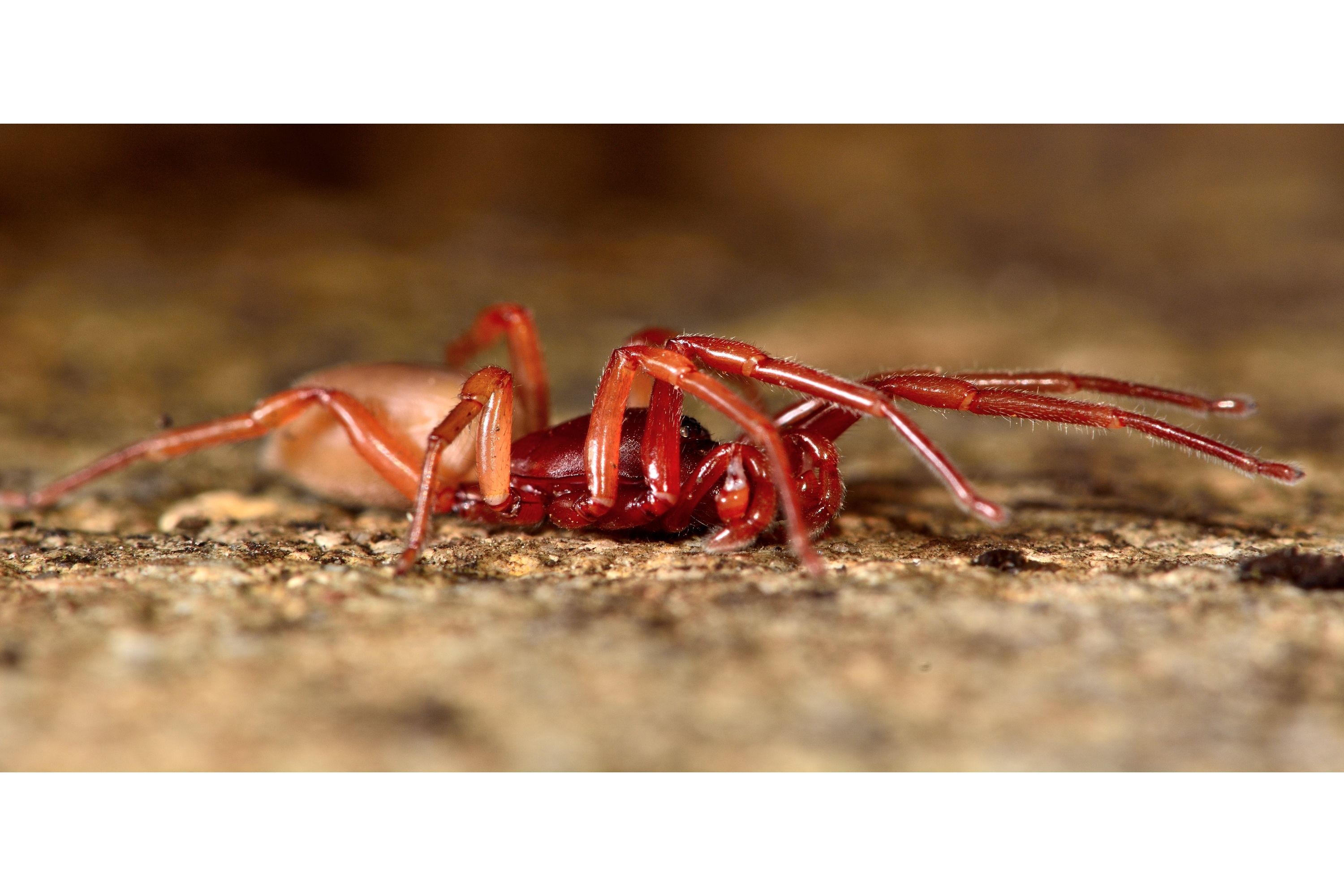Woodlouse spider
(Dysdera crocata)

Description
Dysdera crocata is a species of spider that preys primarily upon woodlice. Other common names refer to variations on the common name of its prey, including woodlouse hunter, sowbug hunter, sowbug killer, pillbug hunter and slater spider. Adult females have a body length of 11–15 mm (0.43–0.59 in), males 9–10 mm (0.35–0.39 in).They have six eyes, a tawny orange to dark-red cephalothorax and legs, and a shiny (sometimes very shiny) pale beige to yellow-brown abdomen, sometimes dark grey. Notably, they have disproportionately large chelicerae for a spider of this size. Dysdera crocata is difficult to distinguish from the much less common Dysdera erythrina, although this species is not often found near human habitation. Dysdera crocata, which originated in the Mediterranean area, now has a cosmopolitan distribution (see map), ranging from Eurasia to parts of North and South America, South Africa, Australia, and New Zealand. Woodlouse spiders are usually found under logs, rocks, bricks, plant pots and in leaf litter in warm places, often close to woodlice. They have also been found in houses. They spend the day in a silken retreat made to enclose crevices in, generally, partially decayed wood, but sometimes construct tent-like structures in indents of various large rocks. During the day, these spiders spend their time in special hiding places covered in silk. Woodlouse spiders hunt at night and do not spin webs. Rather than spinning their webs at night, they use this time to search warm places for prey. Their diet consists principally of woodlice which—despite their tough exoskeleton—are pierced easily by the spider's large chelicerae; the spider usually stabs and injects venom into the woodlouse's soft underbelly while avoiding any noxious defensive chemicals. The Woodlouse Spider’s powerful jaws are made to impale the thick armor of woodlice and are strong enough to give humans a painful bite. Although the Woodlouse Spider is a dangerous predator to woodlice, it is not known to be a health hazard to humans or smaller animals. Laboratory experiments have shown D. crocata will take other invertebrates, and shows no particular preference for woodlice; these are simply the most common prey in its habitat. Other invertebrates preyed on by D. crocata include silverfish, earwigs, millipedes, burying beetles and crickets. This small but relatively large-fanged spider is very well equipped to prey on underground invertebrates of almost any kind.
Taxonomic tree:







